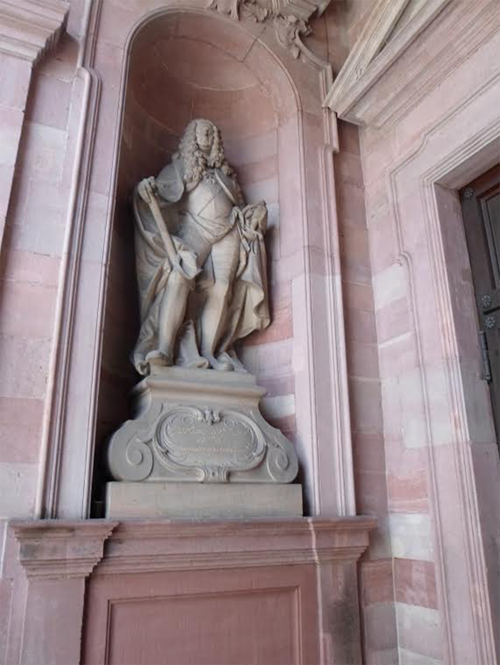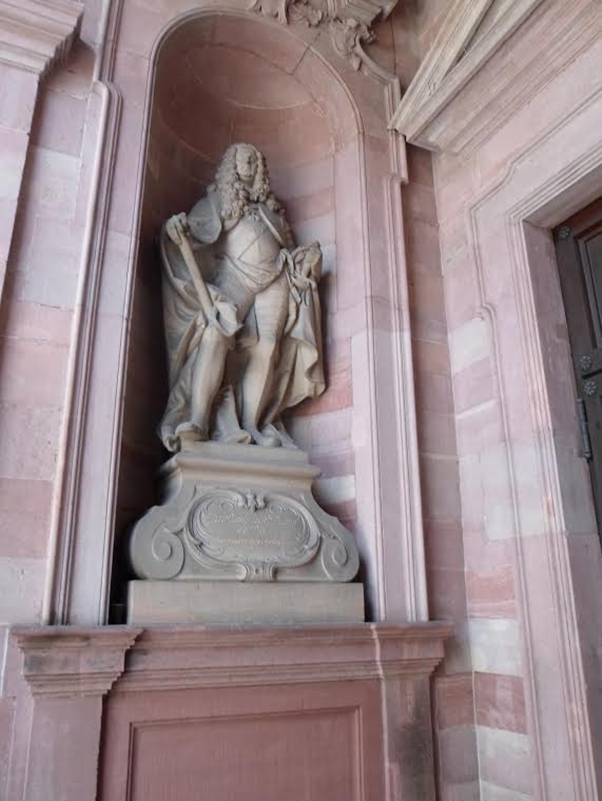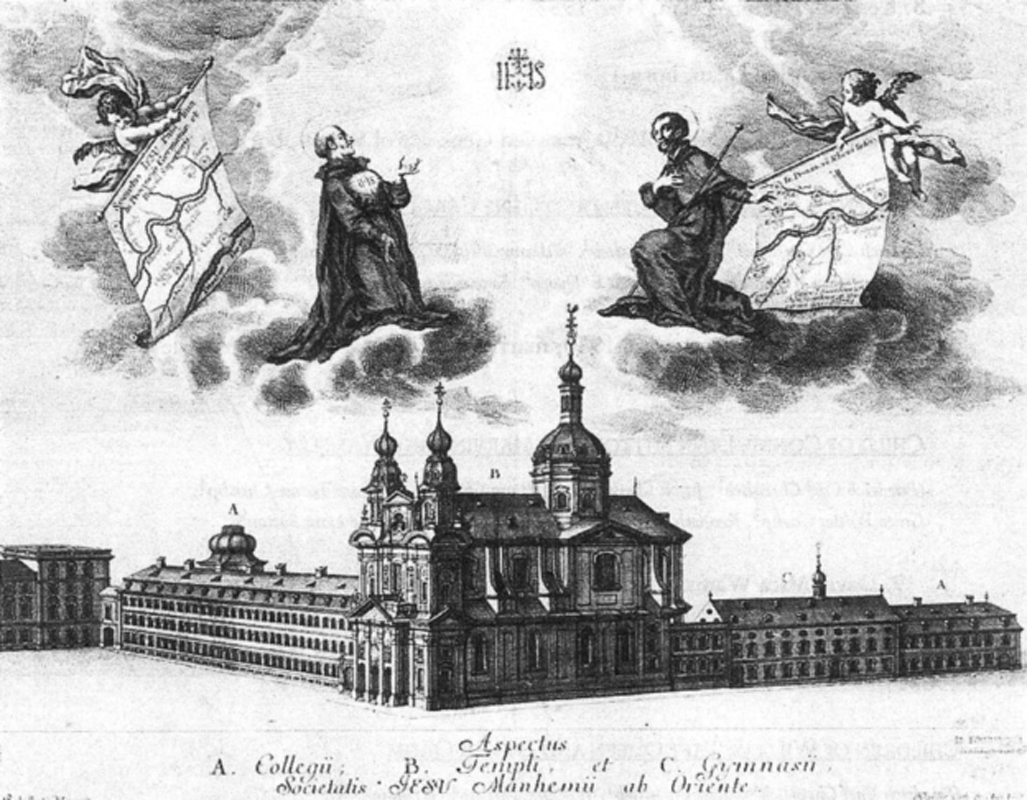House of Wittlesbach
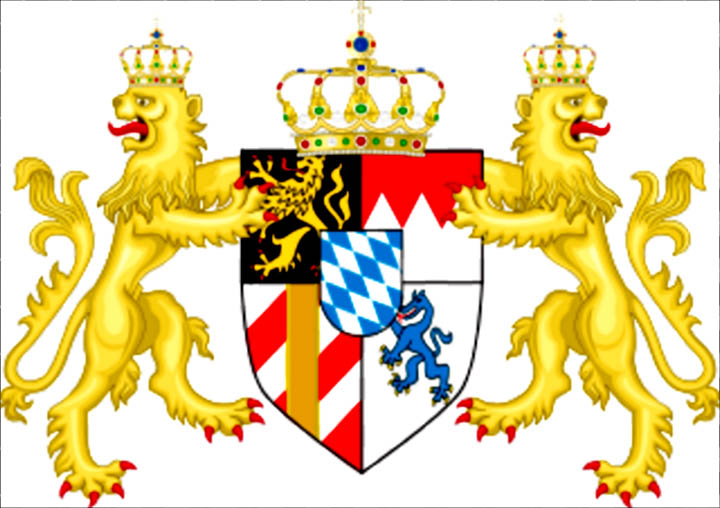
The House of Wittelsbach is of particular interest to the descendants of Friedrich Carl and Anna Catharina Christlieb, because one of its most illustrious members, Prince Elector Karl Philipp III (a.k.a Carl Phillip), served as God-sponsor when Simon aus Frankenstein converted to Christianity at Dürkheim on the afternoon of May 20, 1742, thus becoming Friedrich Carl Christlieb.
Historical Background
"House of Wittelsbach, German noble family that provided rulers of Bavaria and of the Rhenish Palatinate until the 20th century. The name was taken from the Castle of Wittelsbach, which formerly stood near Aichach on the Paar in Bavaria. In 1124, Otto V, Count of Scheyern (died 1155) removed the residence of his family to Wittelsbach and called himself by this name. His son, Otto VI, after serving the German king Friedrich I, was invested Duke of Bavaria, as Otto I in 1180. From that date until 1918, Bavaria was ruled by the Wittelsbachs.”
"The first step toward extending their authority outside Bavaria was made in 1214, when Otto II, through marriage, obtained the Palatinate of the Rhine. A descendant, Louis, became Duke of Bavaria in 1294 and Holy Roman Emperor, as Louis IV, in 1328. In 1329, by the Treaty of Pavia, Louis IV made the first important division of the Wittelsbach lands by granting the Palatinate of the Rhine and the upper Palatinate of Bavaria to his brother’s sons, Rudolf II (died 1353) and Rupert I. Rupert, who, from 1353 to 1390, was sole ruler, was granted the title of Elector of the Palatinate of the Rhine in 1356.”
"The Wittelsbachs of the Palatinate provided a German king, Rupert, who reigned from 1400 to 1410, but their lands continued to be subdivided among themselves, creating a profusion of branches of the family.”
Prince Elector Karl Philipp was a descendant of the Palatine Wittelsbachs. Seven months after serving as Friedrich Carl Christlieb’s God-sponsor, Carl Philipp died at Mannheim in December 1742. The baptism/conversion was one of the Prince Elector’s last public appearances.
With no son to inherit Karl Philipp’s authority, the Paltz-Neuburg line became extinct. The Electorate of the Palatine was inherited by Karl Philipp’s nephew, Karl Theodor of the Palatinate-Sulzbach line of the Wittelsbach family. Karl Philipp’s great-grandson, Maximilian I, Joseph of Palatinate-Zweibrücken became the heir of the Palatinate-Sulzbach line.
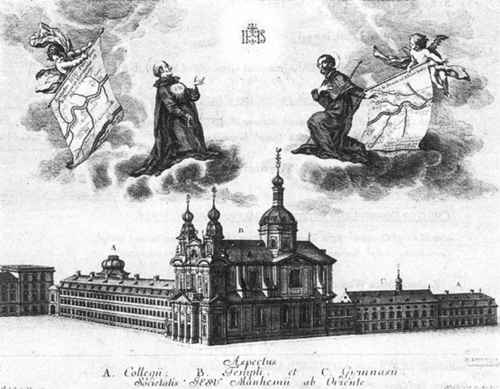
Karl Philipp’s Jesuit Basilica at Mannheim
In 1716, Karl Philipp had succeeded his brother Johann Wilhelm as Elector. Upon his succession, he immediately expelled his brother’s mistress, Dorothea von Velen, from the Electoral Palace at Heidelberg. He then set about a vast four-year reconstruction of Mannheim, which was to become the new capital. In 1720 the capital was changed from Heidelberg to Mannheim. As a symbol of his authority his new residence was rivaled only by the French Royal Palace at Versailles. As a testament to his Catholic faith, Karl Philipp built a vast Jesuit Basilica that included facilities for education, including a parochial school, and university.
Dürkheim as Rhenish Bavaria
(Rheinbayern)
When Benjamin Franklin Christlieb began his research in the 1870s, the Rhineland was, at the time, a part of the Kingdom of Bavaria; hence, the term Rhenish-Bavaria. The following should clarify why descendants of Friedrich Carl Christlieb came to believe that the family had originated in Bavaria, rather than the German Rhineland. It is explained, thusly:
"The Bavarian dukes had also become electors, beginning in 1623. The Bavarian Elector Charles Albert (died 1745) was Holy Roman emperor, as Karl VII, from 1742. With his son Maximilian III Joseph of the Bavarian line of Wittelsbachs died out in 1777. The Elector Palatine, Karl Theodore, also a Wittelsbach, then succeeded to Bavaria, by virtue of a dynastic treaty of 1724. On his death (1799) the Palatinate and Bavaria were reunited under Duke Maximilian IV Joseph of Zweibrücken, who in 1806 became King of Bavaria as Maximilian I.”
In 1806, parts of the former Palatinate, including Mannheim, became part of the new grand duchy. At the Congress of Vienna in 1814 and 1815, the left-bank Palatinate — enlarged by other territories such as the former Bishopric of Speyer and the free imperial city of Speyer — was returned to the Wittelsbachs and became a formal part of the Kingdom of Bavaria in 1816 in exchange for Tirol, which Bavaria ceded to Austria. After this time, it was this region that was principally known as the Palatinate. The area remained a part of Bavaria until after the Second World War, when it was separated and became a part of the new state of Rhineland-Palatinate.
INTERNET RESOURCES:
Encyclopedia Britannia Online: House of Wittelsbach. Paradox Interactive: The Houses of Wittelsbach: The Royal Family of Bavaria. Wikipedia, The Free Encyclopedia: Houses of Wittelsbach.

